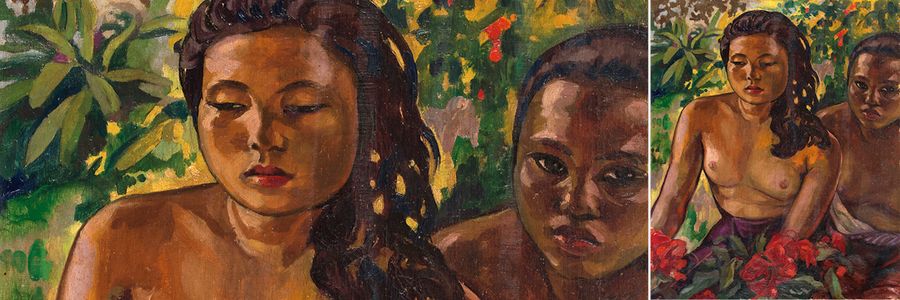ALIX AYMÉ : AN ETHNOGRAPHIC ARTIST
Public sale auction
June 2, 2022 in Neuilly-sur-Seine, France
Tiếng Việt
Français
The Aguttes auction house is offering a fine testimony of Alix Aymé's talent on June 2, 2022 in Neuilly-sur-Seine. The second opus will open with 4 paintings of great historical interest. Indeed, they come from the Laos pavilion of the Colonial Exhibition of 1931. The original decor of this pavilion included 47 paintings by Alix Aymé, who had explored the most remote parts of Laos. Her brother-in-law, Edouard Muller, who married Suzanne Aymé, was won over by the charm of these paintings and acquired the four presented for sale at the end of the Exhibition. Preserved by the family for 90 years, this collection was thus saved. It will be on display from May 17 before its sale on June 2, 2022. Two of the paintings have been the subject of a loan request and will be exhibited in Evian, Palais Lumière, in the exhibition "Itinéraire de l'ailleurs, artistes voyageuses de la Belle époque."
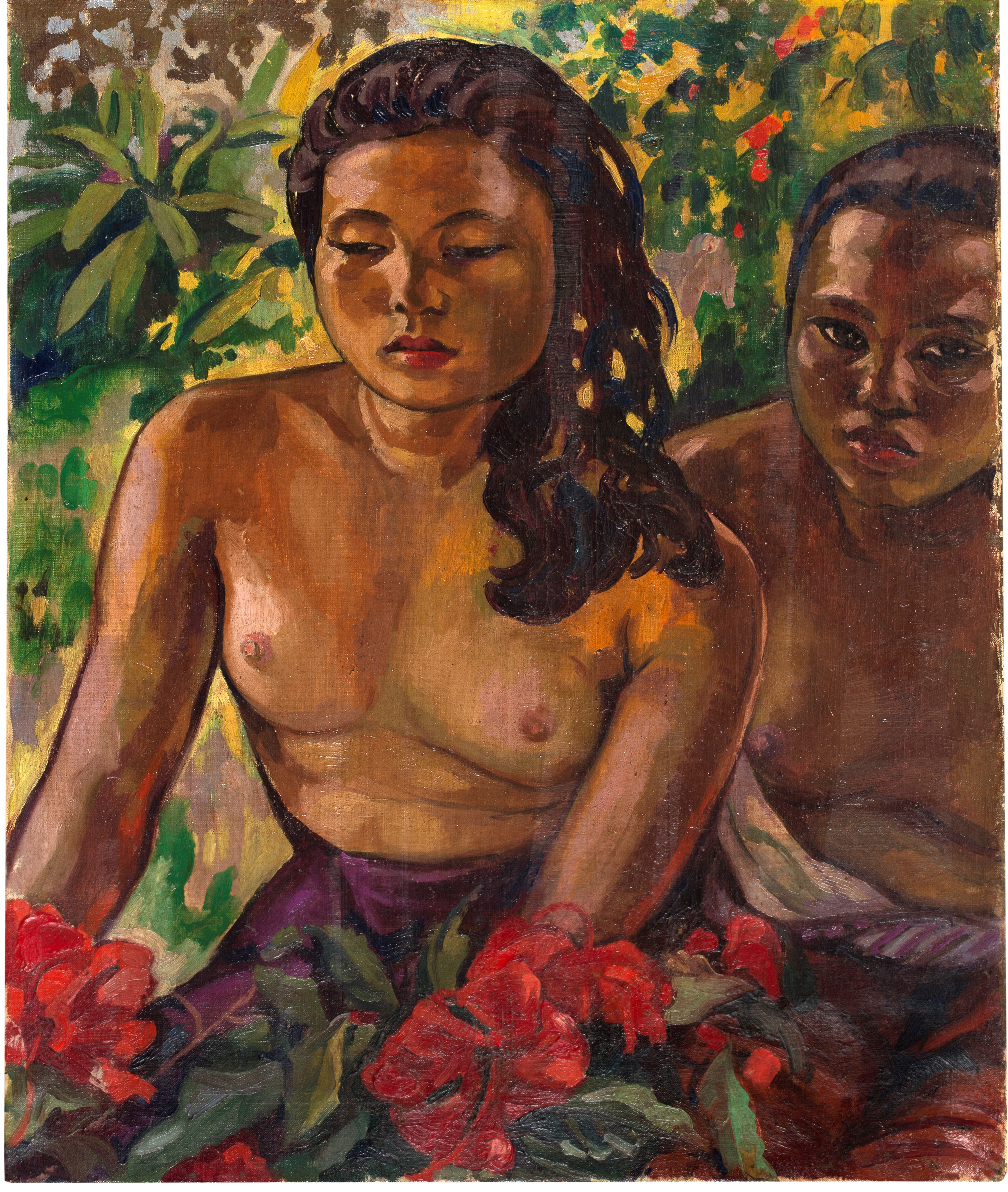
ALIX AYME (1894-1989)
Les jeunes filles Moï, 1930
Oil on canvas
55 x 46.5 cm
Provenance
Collection of the artist's family, acquired following the Colonial Exhibition in Paris and passed down through the family
« Her knowledge of the Far East, of Chinese and Japanese stylizations whose grace and fantasy accommodate traditional disciplines were to push her decidedly towards the search for delicate melodies of nature expressed in a simple and clear style ».
Marcel Aymé, beau-frère du peintre
In 1929, the Revue Indochinoise Illustrée devoted an article to Alix Aymé, entitled «Madame Alix de Fautereau, Indochinese painter» and explained the atypical and remarkable career of this young female painter who had the eye of an ethnographer.
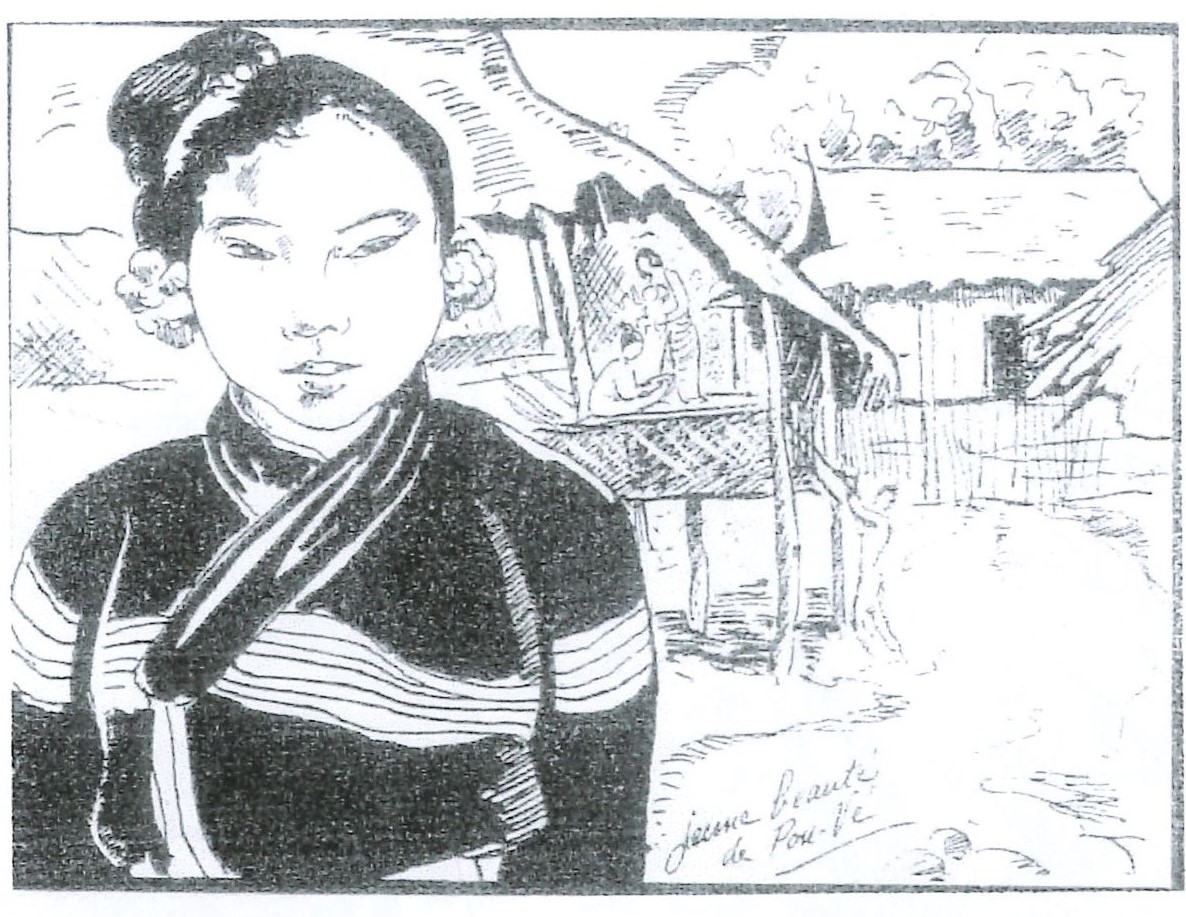
Sketch by Alix Aymé (known as Hava) reported in Revue indochinoise illustrée n°62, March 1932
After attending the Toulouse Conservatory of Music, the young Alix Hava became a student of Maurice Denis, leader of the Nabi group. She immediately worked on the décor of the Théâtre des Champs-Élysées, a masterpiece of new decorative art, alongside the great masters of the Parisian avant-garde, such as Bourdelle, Ker-Xavier Roussel and Edouard Vuillard. When she spends her vacations in Brittany, not far from the Gloanec inn, she is surrounded by the memory of Gauguin. In fact, she initiated herself into woodcuts.

Related work: Paul Gauguin, Two Tahitian Women, 1899, Metropolitan Museum of Art
Throughout her career, she frequented the intellectual, literary and artistic circles of Paris. She became a friend of Foujita and Saint-Exupéry. It is with Maurice Denis that she remains closest and with whom she maintains a sustained correspondence. She retained a style in which color was paramount.
Modern artist, Alix Hava is also a great traveler. Since her youth, she has traveled the seas and oceans, from the Mediterranean shores to Martinique. With her husband, Paul de Fautereau-Vassel, she discovered Asia and became fascinated by Far Eastern cultures. From 1921, she worked closely with the Hanoi School of Fine Arts. She was introduced to various Asian artistic techniques, including painting on silk and lacquer, and contributed with Inguimberty to the teaching of lacquer return in the school. In 1931, when she married Georges Aymé, brother of the writer Marcel Aymé, and Lieutenant General of the Army in Indochina, Alix de Fautereau, now Alix Aymé, continued to practice her profession in this region of the world that she particularly liked. Close to the king of Luang-Prabang, she executed the mural decoration of the reception room of the H.M. Sisavang-Vong palace.
Her works are at the junction of the Nabis style and traditional Vietnamese painting.
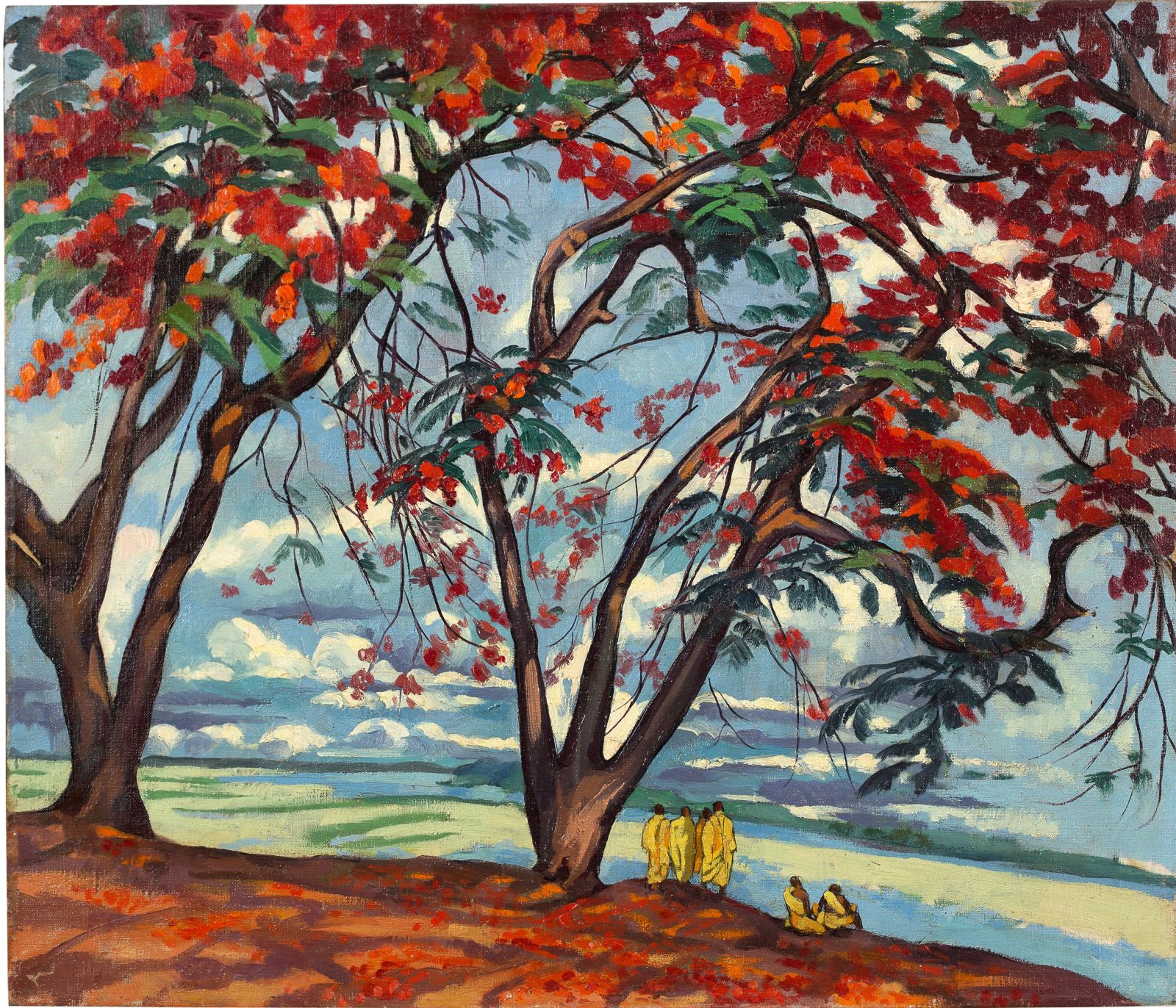
ALIX AYME (1894-1989)
Flamboyants aux bords du Mékong à Vientiane, 1930
Oil on canvas
59.8 x 70 cm
Provenance
Collection of the artist's family, acquired following the Colonial Exhibition in Paris and passed down through the family
Alix Aymé's mission
More than a modern artist, Alix Aymé is an ethnographer. In 1929 and 1930, she was commissioned by the general government of Indochina to decorate the Laos section of the 1931 Paris International Colonial Exhibition.
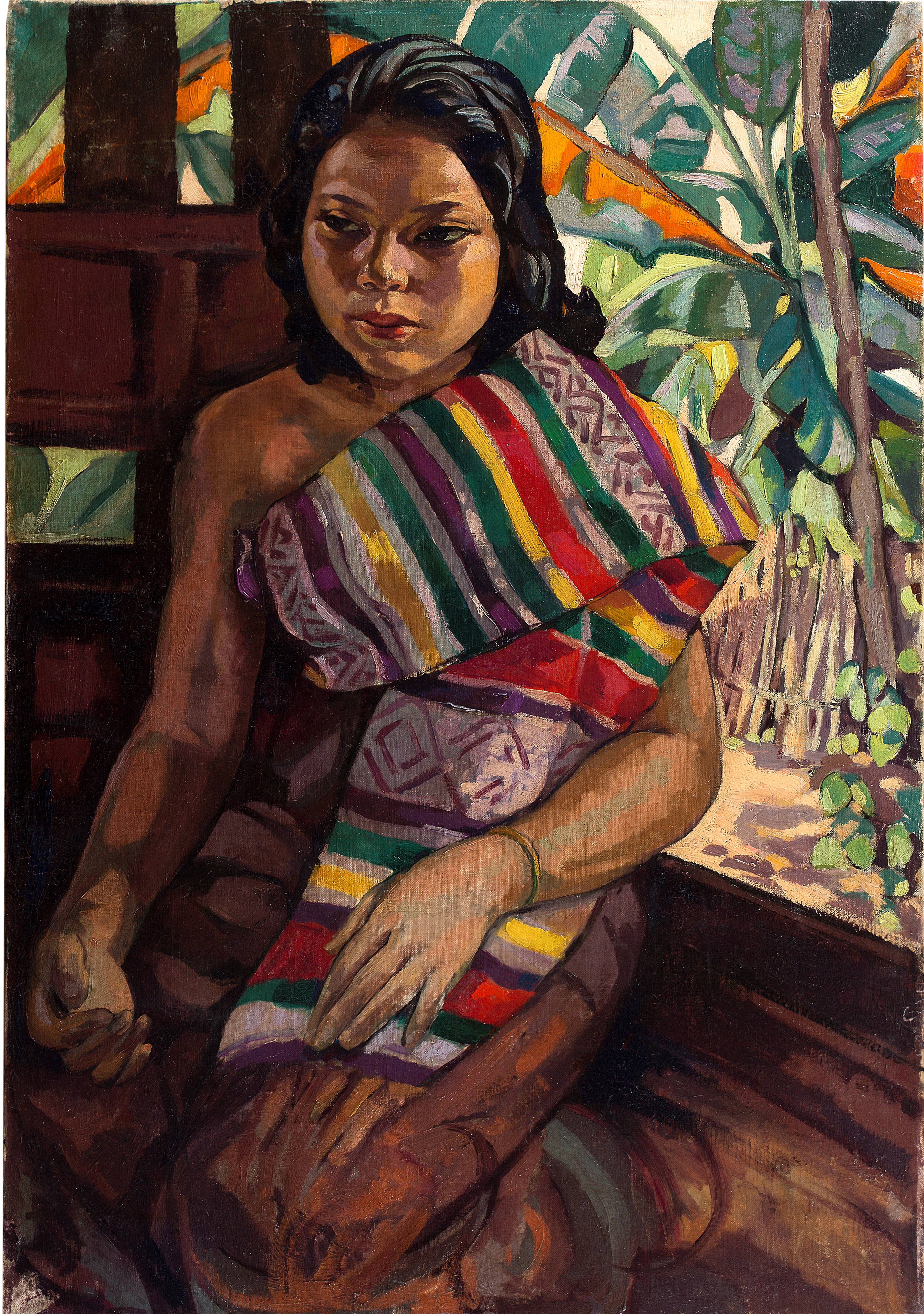
ALIX AYME (1894-1989)
Laotienne devant sa paillote, 1930
Oil on canvas
78 x 54 cm
Provenance
Collection of the artist's family, acquired following the Colonial Exhibition in Paris and passed down through the family
Like the explorer Alexandra David-Néel, she ventured into regions that had remained inaccessible to Westerners until now and set out to meet the remote indigenous populations. Starting from Luang-Brabang, she travels up the Mekong River in a dugout canoe and continues her journey on horseback along mountain trails. In the manner of the great painters who made the Grand Tour, she carefully documented her travels and illustrated them. Her stories, rich in colourful and touching anecdotes, have reached us through articles published in specialized magazines. During her expeditions, Alix Aymé devoted herself to her art and executed numerous paintings, true ethnographic testimonies of these populations, almost unknown at the time. She took care to describe each detail scrupulously, thus noting costumes, objects, landscapes..
The Colonial Exhibition - Paris, 1931
The Colonial Exhibition had been approved by the law promulgated on March 17, 1920. Initially planned for 1925, the event finally opened its doors on May 6, 1931, at the edge of the Bois de Vincennes, coinciding with the completion of line 8 of the Paris metro.
The French protectorate of Laos is represented in the southern part of the Bois, in the midst of the other French territories of Indochina and the rest of the French colonies, not far from what was considered the «highlight» of this event, the replica of the
Angkor Wat temple.

Plan of the International Colonial Exhibition by Albert Tournaire, December 15, 1928
In the Indochina section, orchestrated by Victor Tardieu with the support of the painter Le Pho, the bronze Tête d’annamite d’Evariste Jonchère and the Buste de jeune fille de Vu Cao Dam, now part of the Quai Branly Museum collections, were exhibited.
The Laos section consists of a micro-village of traditional Lao buildings, where monks, artisans, singers and musicians are active. The religious buildings include a replica of Wat Xiengthong, one of the oldest temples in Luang Prabang, the former royal capital.
Religious frescoes adorn the peristyle. This replica is made by the architects Charles and Gabriel Blanche under the supervision of Alix Aymé who madé many sketches of it. Inside the temple are placed Buddha figures of various sizes and worship objects made of precious materials. Right next to the temple is built a reproduction of the Wat Sisakhet Religious Library in Ventiane. Finally, behind this library is a small chapel dedicated to the monks’ meditation
In the middle of this Laos section is the proper exhibition pavilion, built in the traditional Lao style where traditional jewelry and silks are displayed. The walls are covered with the 47 paintings captured on the spot by Alix Aymé.
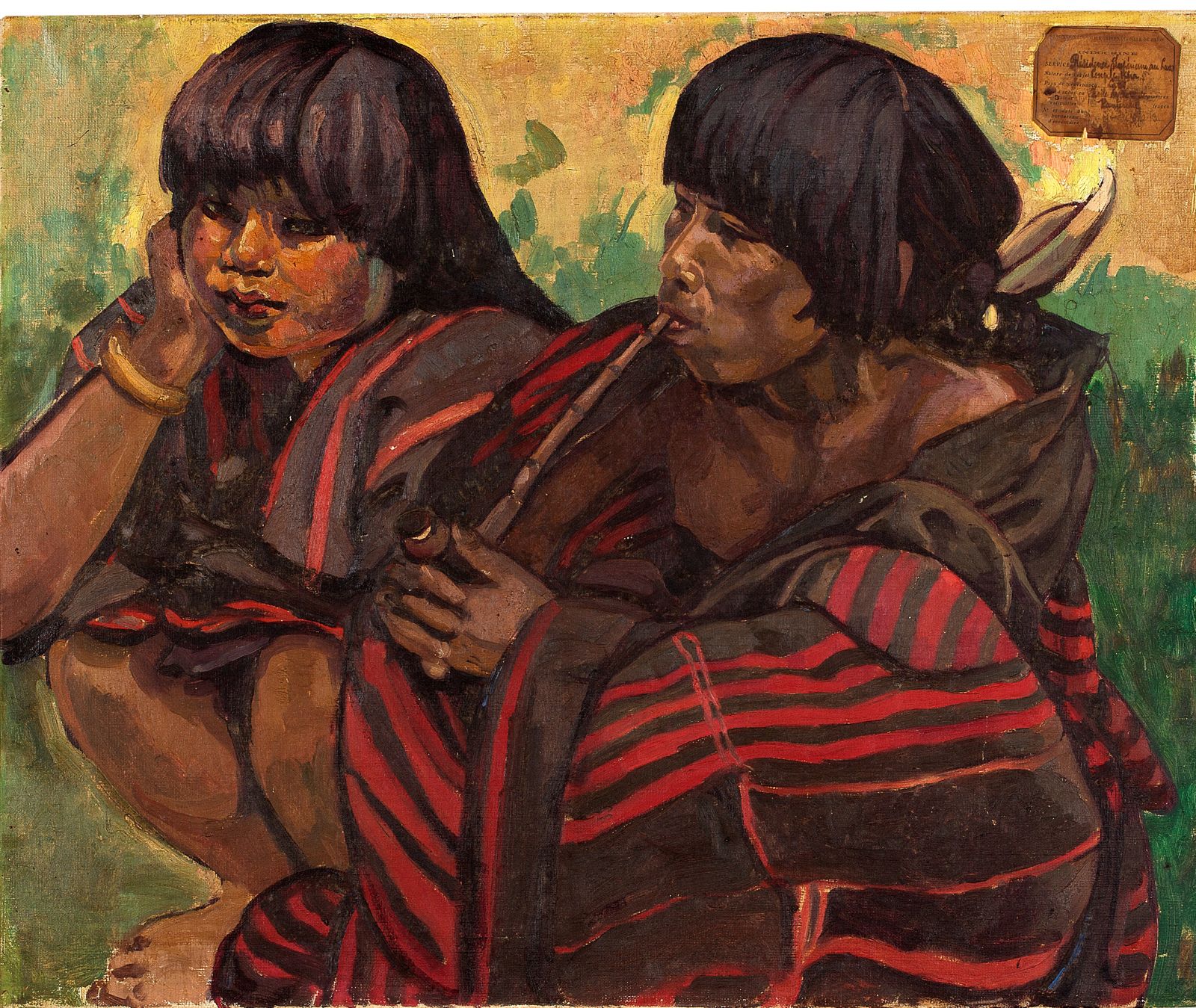
ALIX AYME (1894-1989)
Couple Kha, 1930
Oil on canvas
54.4 x 66 cm
Provenance
Collection of the artist's family, acquired following the Colonial Exhibition in Paris and passed down through the family
This pictorial ensemble is remarkable not only for its artistic quality but also for its ethnographic interest. On her canvases, one
can recognize traditional clothing, fabrics and accessories such as the bamboo pipes exhibited at the Colonial Exhibition and now
found in national collections. If, after 1931, the French government kept a number of ethnographic objects, the works of
Alix Aymé did not enter public collections.
Of this incredible series of paintings, of which we have since lost track, only the four canvases presented for sale today remain. Acquired by the artist’s brother-in-law at the end of the exhibition, they have remained in the family to this day. After traveling thousands of miles from Laos in 1931 and being installed by Alix Aymé in the Laos Pavilion, they have been remarkably well preserved in France for nearly a hundred years and arrive in their original condition, barely tarnished by the effects of time.
These four paintings illustrate Laos, neither dreamed nor fantasized but lived and observed. They testify to the diversity and beauty of the Laotian landscape and culture. Alix Aymé is the cultural ambassador of this country still little known at the time.

Pipe, early 20th century, Commissariat Général de l'Indochine, 1931 colonial exhibition, Musée du Quai Branly, Paris
« The Laotian women look like Tahitian women and the nature here is similar to what Gauguin depicted in his paintings. I paint here all day, which has always been my dream.»
Letter from Alix Aymé to Maurice Denis, December 10, 1929
ASIAN PAINTERS · MAJOR WORKS [34] INDOCHINA IN THE 20th CENTURY
Auction
Thursday, June 2, 2022, at 3 p.m.Exhibition by appointment from May 16 to 31 from 2 to 5:30 pm, except weekends
Aguttes Neuilly
Charlotte Aguttes-Reynier
Expert Asian painters
+33 1 41 92 06 49 • reynier@aguttes.com
Aguttes, first auction house in Europe on the market of 20th century Asian painters
The Asian painters department directed by expert Charlotte Aguttes-Reynier has been working for the past decade to bring back to light the little-known Asian artists of the 20th century. Aguttes has thus presented several dozen paintings by Lê Phổ, Mai Trung Thứ or Vu Cao Dam, and has regularly obtained new world records. These efforts have enabled the auction house to take the leading position in Europe in the market for Asian painters, to the satisfaction of buyers from around the world.
Among the signatures that are sought after by Asian collectors, and that Aguttes defends with passion, let us mention among others Lê Phổ, Nam Son, Alix Aymé, Le Thy, Vu Cao Dàm, Mai Trung Thứ, Inguimberty, Nguyen Phan Chánh, Nguyen Tien Chung, Tran Phuc Duyen, Le Thi Luu... Raden Saleh... And also Sanyu, Lin Fengmian, Pan Yuliang...but also all the artists coming from the schools of Fine Arts of these regions of Asia.
Sales are organized on a quarterly basis at carefully chosen dates, in connection with the market news on the most important international markets.

ALIX AYME (1894-1989)
Les jeunes filles Moï, 1930
Oil on canvas
55 x 46.5 cm
Provenance
Collection of the artist's family, acquired following the Colonial Exhibition in Paris and passed down through the family
« Her knowledge of the Far East, of Chinese and Japanese stylizations whose grace and fantasy accommodate traditional disciplines were to push her decidedly towards the search for delicate melodies of nature expressed in a simple and clear style ».
Marcel Aymé, beau-frère du peintre
In 1929, the Revue Indochinoise Illustrée devoted an article to Alix Aymé, entitled «Madame Alix de Fautereau, Indochinese painter» and explained the atypical and remarkable career of this young female painter who had the eye of an ethnographer.

Sketch by Alix Aymé (known as Hava) reported in Revue indochinoise illustrée n°62, March 1932
After attending the Toulouse Conservatory of Music, the young Alix Hava became a student of Maurice Denis, leader of the Nabi group. She immediately worked on the décor of the Théâtre des Champs-Élysées, a masterpiece of new decorative art, alongside the great masters of the Parisian avant-garde, such as Bourdelle, Ker-Xavier Roussel and Edouard Vuillard. When she spends her vacations in Brittany, not far from the Gloanec inn, she is surrounded by the memory of Gauguin. In fact, she initiated herself into woodcuts.

Related work: Paul Gauguin, Two Tahitian Women, 1899, Metropolitan Museum of Art
Throughout her career, she frequented the intellectual, literary and artistic circles of Paris. She became a friend of Foujita and Saint-Exupéry. It is with Maurice Denis that she remains closest and with whom she maintains a sustained correspondence. She retained a style in which color was paramount.
Modern artist, Alix Hava is also a great traveler. Since her youth, she has traveled the seas and oceans, from the Mediterranean shores to Martinique. With her husband, Paul de Fautereau-Vassel, she discovered Asia and became fascinated by Far Eastern cultures. From 1921, she worked closely with the Hanoi School of Fine Arts. She was introduced to various Asian artistic techniques, including painting on silk and lacquer, and contributed with Inguimberty to the teaching of lacquer return in the school. In 1931, when she married Georges Aymé, brother of the writer Marcel Aymé, and Lieutenant General of the Army in Indochina, Alix de Fautereau, now Alix Aymé, continued to practice her profession in this region of the world that she particularly liked. Close to the king of Luang-Prabang, she executed the mural decoration of the reception room of the H.M. Sisavang-Vong palace.
Her works are at the junction of the Nabis style and traditional Vietnamese painting.

ALIX AYME (1894-1989)
Flamboyants aux bords du Mékong à Vientiane, 1930
Oil on canvas
59.8 x 70 cm
Provenance
Collection of the artist's family, acquired following the Colonial Exhibition in Paris and passed down through the family
Alix Aymé's mission
More than a modern artist, Alix Aymé is an ethnographer. In 1929 and 1930, she was commissioned by the general government of Indochina to decorate the Laos section of the 1931 Paris International Colonial Exhibition.

ALIX AYME (1894-1989)
Laotienne devant sa paillote, 1930
Oil on canvas
78 x 54 cm
Provenance
Collection of the artist's family, acquired following the Colonial Exhibition in Paris and passed down through the family
Like the explorer Alexandra David-Néel, she ventured into regions that had remained inaccessible to Westerners until now and set out to meet the remote indigenous populations. Starting from Luang-Brabang, she travels up the Mekong River in a dugout canoe and continues her journey on horseback along mountain trails. In the manner of the great painters who made the Grand Tour, she carefully documented her travels and illustrated them. Her stories, rich in colourful and touching anecdotes, have reached us through articles published in specialized magazines. During her expeditions, Alix Aymé devoted herself to her art and executed numerous paintings, true ethnographic testimonies of these populations, almost unknown at the time. She took care to describe each detail scrupulously, thus noting costumes, objects, landscapes..
The Colonial Exhibition - Paris, 1931
The Colonial Exhibition had been approved by the law promulgated on March 17, 1920. Initially planned for 1925, the event finally opened its doors on May 6, 1931, at the edge of the Bois de Vincennes, coinciding with the completion of line 8 of the Paris metro.
The French protectorate of Laos is represented in the southern part of the Bois, in the midst of the other French territories of Indochina and the rest of the French colonies, not far from what was considered the «highlight» of this event, the replica of the
Angkor Wat temple.

Plan of the International Colonial Exhibition by Albert Tournaire, December 15, 1928
In the Indochina section, orchestrated by Victor Tardieu with the support of the painter Le Pho, the bronze Tête d’annamite d’Evariste Jonchère and the Buste de jeune fille de Vu Cao Dam, now part of the Quai Branly Museum collections, were exhibited.
The Laos section consists of a micro-village of traditional Lao buildings, where monks, artisans, singers and musicians are active. The religious buildings include a replica of Wat Xiengthong, one of the oldest temples in Luang Prabang, the former royal capital.
Religious frescoes adorn the peristyle. This replica is made by the architects Charles and Gabriel Blanche under the supervision of Alix Aymé who madé many sketches of it. Inside the temple are placed Buddha figures of various sizes and worship objects made of precious materials. Right next to the temple is built a reproduction of the Wat Sisakhet Religious Library in Ventiane. Finally, behind this library is a small chapel dedicated to the monks’ meditation
In the middle of this Laos section is the proper exhibition pavilion, built in the traditional Lao style where traditional jewelry and silks are displayed. The walls are covered with the 47 paintings captured on the spot by Alix Aymé.

ALIX AYME (1894-1989)
Couple Kha, 1930
Oil on canvas
54.4 x 66 cm
Provenance
Collection of the artist's family, acquired following the Colonial Exhibition in Paris and passed down through the family
This pictorial ensemble is remarkable not only for its artistic quality but also for its ethnographic interest. On her canvases, one
can recognize traditional clothing, fabrics and accessories such as the bamboo pipes exhibited at the Colonial Exhibition and now
found in national collections. If, after 1931, the French government kept a number of ethnographic objects, the works of
Alix Aymé did not enter public collections.
Of this incredible series of paintings, of which we have since lost track, only the four canvases presented for sale today remain. Acquired by the artist’s brother-in-law at the end of the exhibition, they have remained in the family to this day. After traveling thousands of miles from Laos in 1931 and being installed by Alix Aymé in the Laos Pavilion, they have been remarkably well preserved in France for nearly a hundred years and arrive in their original condition, barely tarnished by the effects of time.
These four paintings illustrate Laos, neither dreamed nor fantasized but lived and observed. They testify to the diversity and beauty of the Laotian landscape and culture. Alix Aymé is the cultural ambassador of this country still little known at the time.

Pipe, early 20th century, Commissariat Général de l'Indochine, 1931 colonial exhibition, Musée du Quai Branly, Paris
« The Laotian women look like Tahitian women and the nature here is similar to what Gauguin depicted in his paintings. I paint here all day, which has always been my dream.»
Letter from Alix Aymé to Maurice Denis, December 10, 1929
ASIAN PAINTERS · MAJOR WORKS [34] INDOCHINA IN THE 20th CENTURY
Auction
Thursday, June 2, 2022, at 3 p.m.
Aguttes Neuilly
Charlotte Aguttes-Reynier
Expert Asian painters
+33 1 41 92 06 49 • reynier@aguttes.com
Aguttes, first auction house in Europe on the market of 20th century Asian painters
The Asian painters department directed by expert Charlotte Aguttes-Reynier has been working for the past decade to bring back to light the little-known Asian artists of the 20th century. Aguttes has thus presented several dozen paintings by Lê Phổ, Mai Trung Thứ or Vu Cao Dam, and has regularly obtained new world records. These efforts have enabled the auction house to take the leading position in Europe in the market for Asian painters, to the satisfaction of buyers from around the world.
Among the signatures that are sought after by Asian collectors, and that Aguttes defends with passion, let us mention among others Lê Phổ, Nam Son, Alix Aymé, Le Thy, Vu Cao Dàm, Mai Trung Thứ, Inguimberty, Nguyen Phan Chánh, Nguyen Tien Chung, Tran Phuc Duyen, Le Thi Luu... Raden Saleh... And also Sanyu, Lin Fengmian, Pan Yuliang...but also all the artists coming from the schools of Fine Arts of these regions of Asia.
Sales are organized on a quarterly basis at carefully chosen dates, in connection with the market news on the most important international markets.



